“Es una Situación que retrotrae a la infancia, porque el niño teme, sobretodo, perder el afecto de sus padres."
José Antonio Marina Torres, Anatomía del Miedo
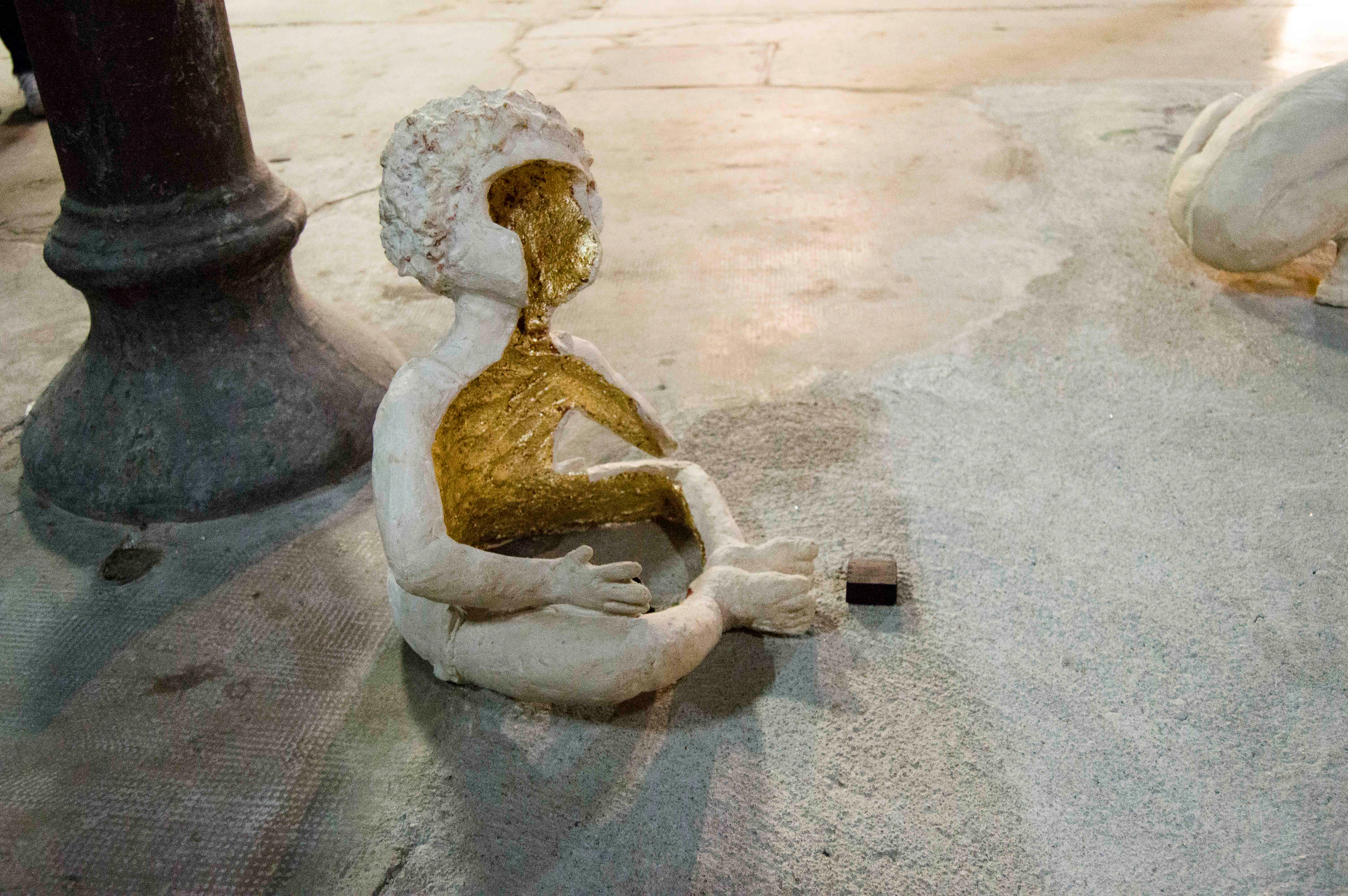
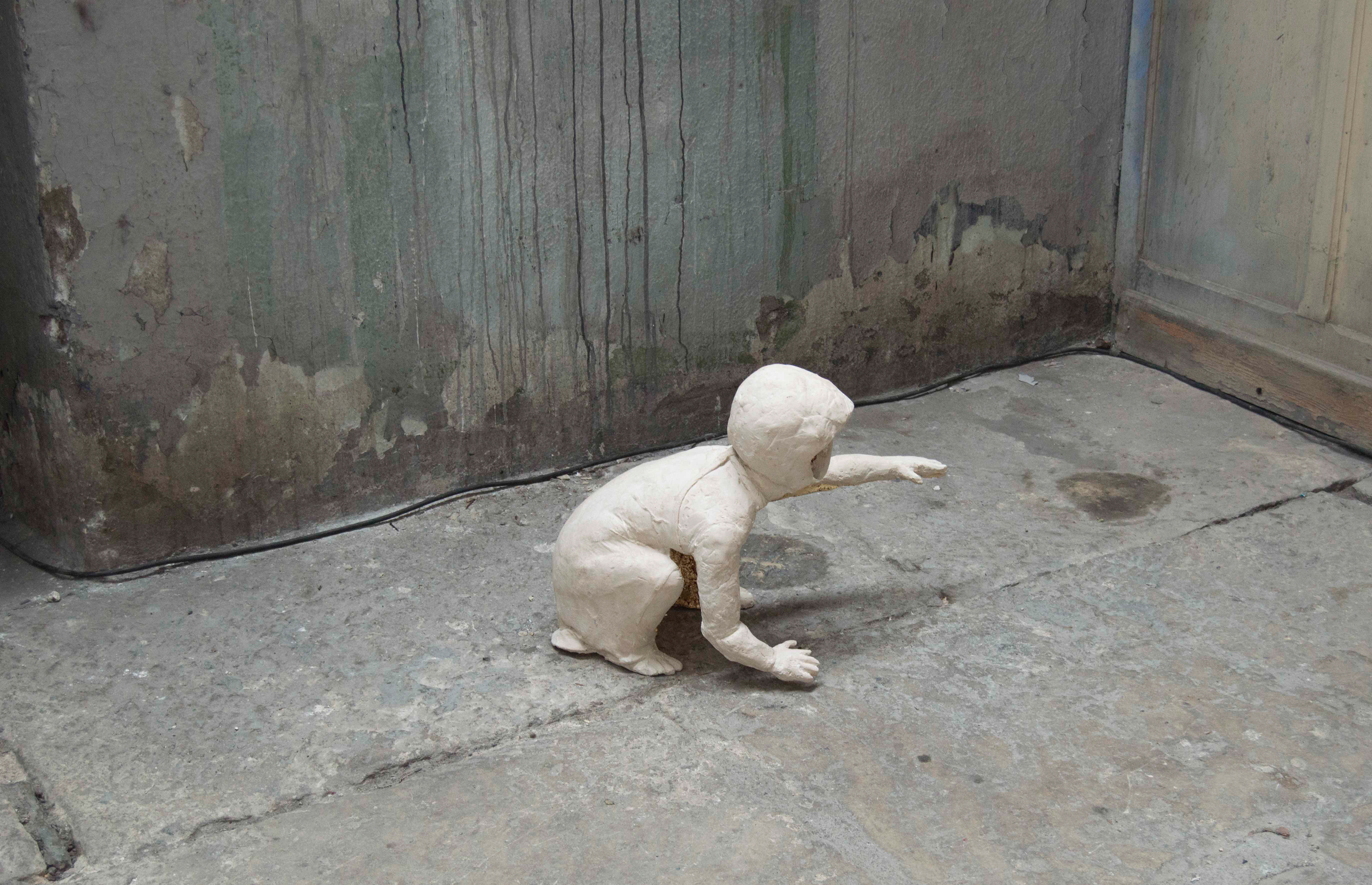
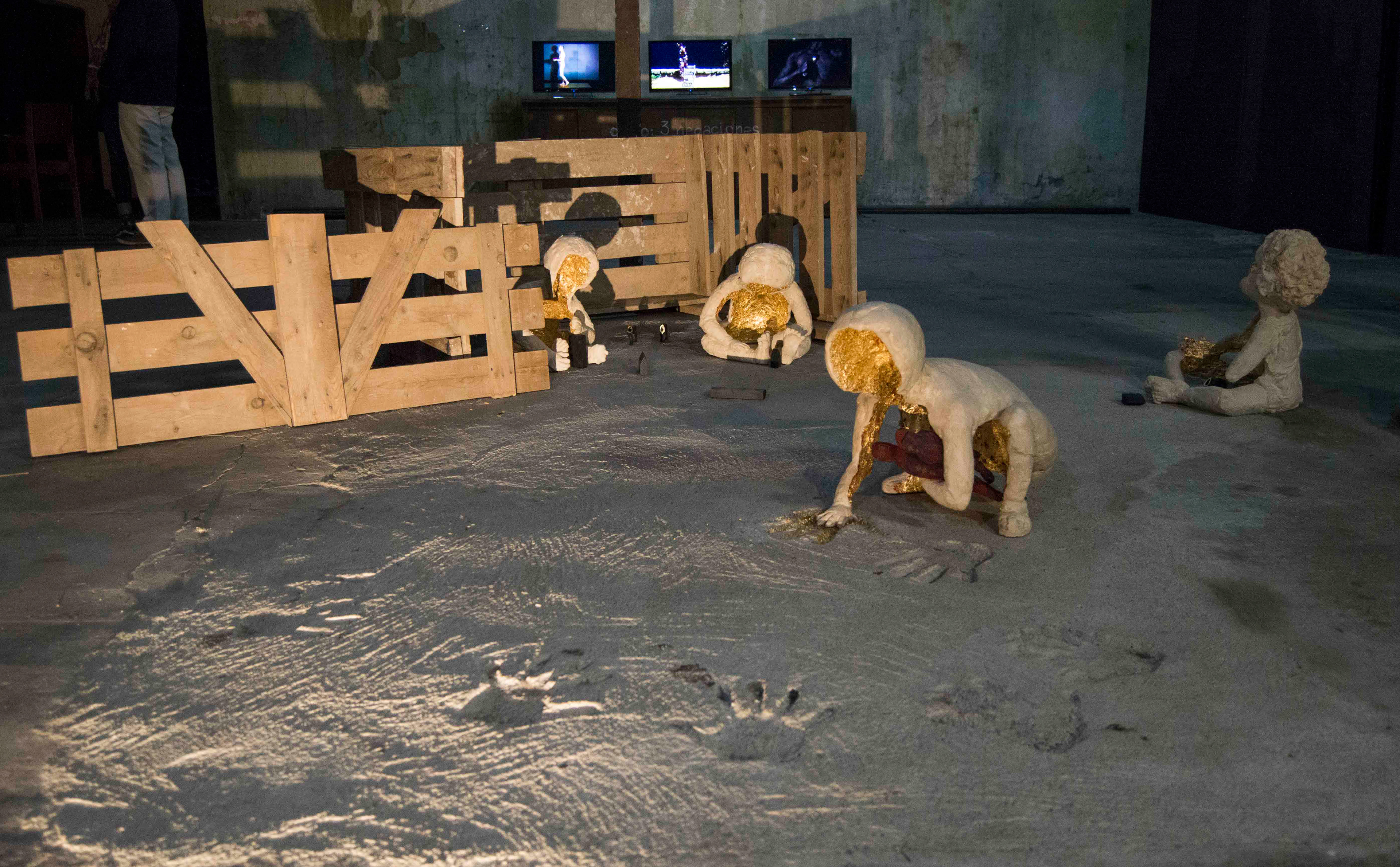
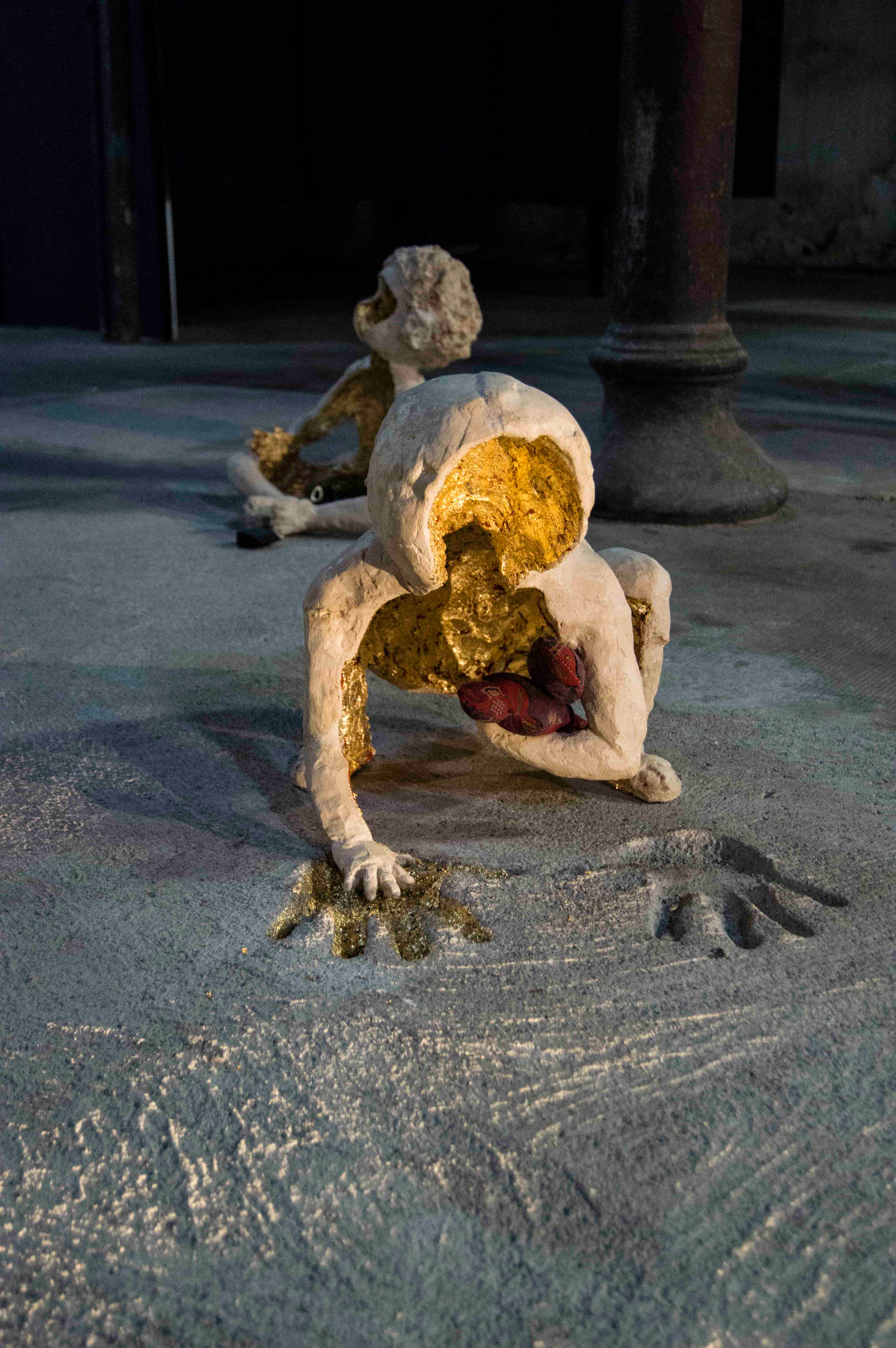
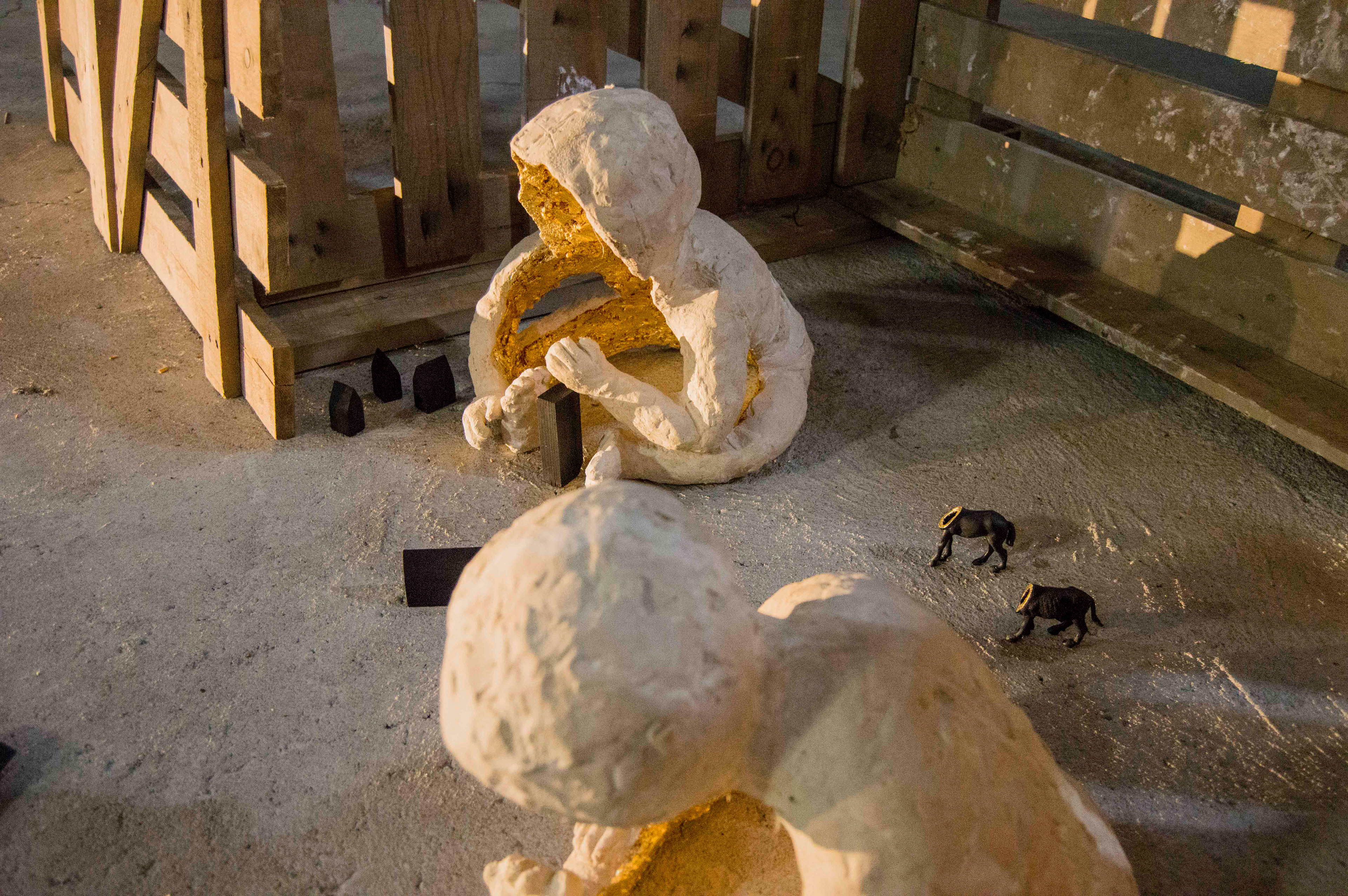
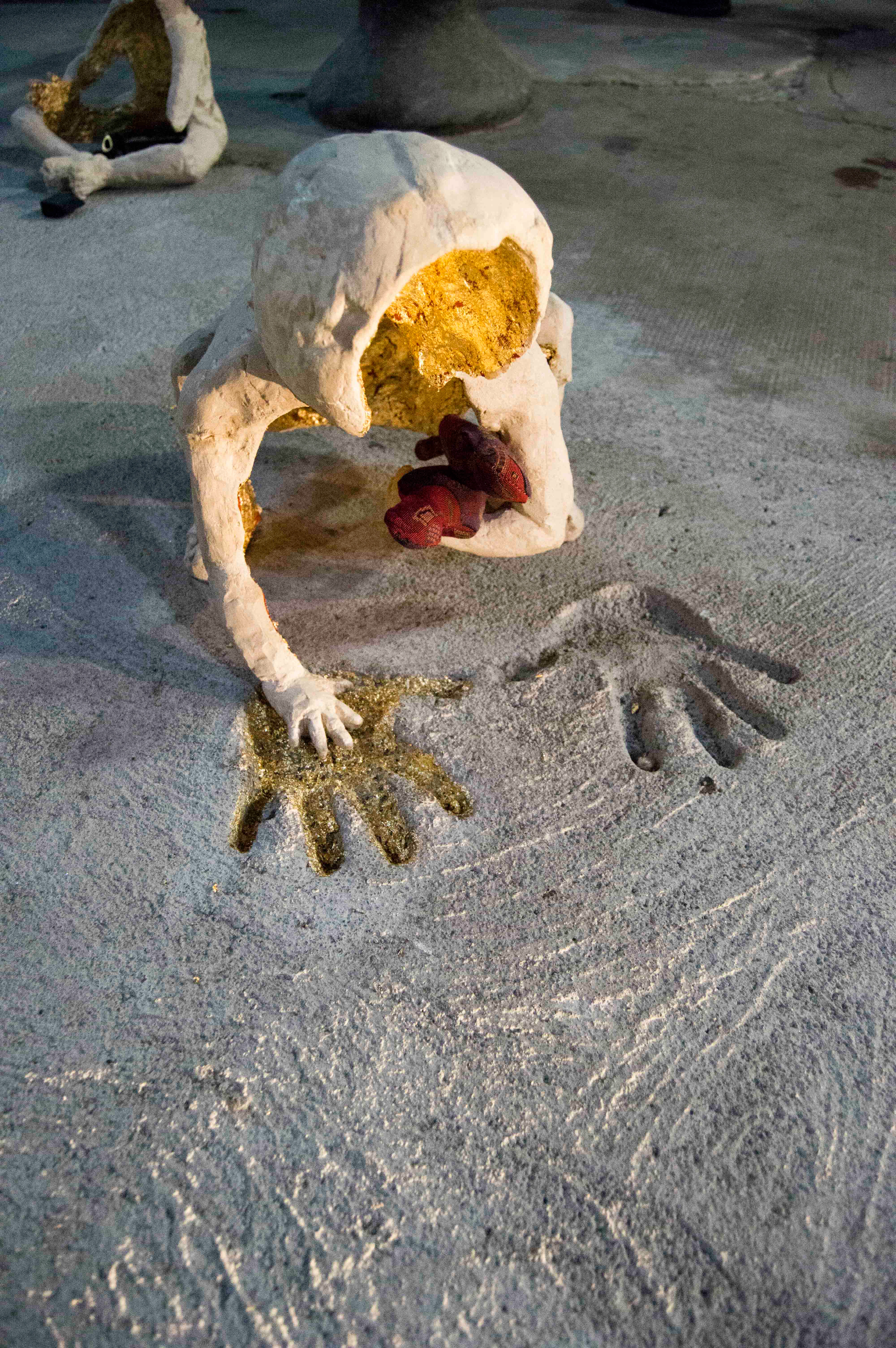
Serie Escultórica compuesta por cinco piezas. Los materiales utilizados corresponden a un mortero a base de Exaduro, arena de río; así mismo tienen resina y pan de oro. Para la instalación de esta se incluyeron madera, juguetes reformados y los muñecos textiles en colaboración con la Artista Raquel Algaba López.
La Serie I’m Odd, I’m New, consta de cinco niños, cuatro de ellos representan diferentes personajes literarios, en cuyo contexto emanan los estadios de la infancia, el desarrollo y creación del miedo en el infante y el cómo lo afronta. La quinta pieza, correspondía a una Neonato, cerrando el ciclo.
La búsqueda y representación de dichas fases a través de personajes ficticios permitía una lectura más abierta de los diferentes mecanismos que tienen los niños a la hora de superar obstáculos durante su reconocimiento del entorno.
Sculptural installation is integrated into five pieces. The materials used correspond to a mortar based on Exaduro, river sand; They also have resin and gold leaf. For this installation: wood, reformed toys and textile dolls, in collaboration with the Artist Raquel Algaba López.
The I'm Odd, I'm New Series consists of five children, four of them represent different literary characters, in whose context the stages of childhood emanate, the development and creation of fear in the infant and how he deals with it. The fifth piece corresponded to a Neonate, closing the cycle.
The search and representation of these phases through fictitious characters allowed a more open reading of the different mechanisms children have when the situation comes to overcoming obstacles during their recognition of the environment.
The search and representation of these phases through fictitious characters allowed a more open reading of the different mechanisms children have when the situation comes to overcoming obstacles during their recognition of the environment.
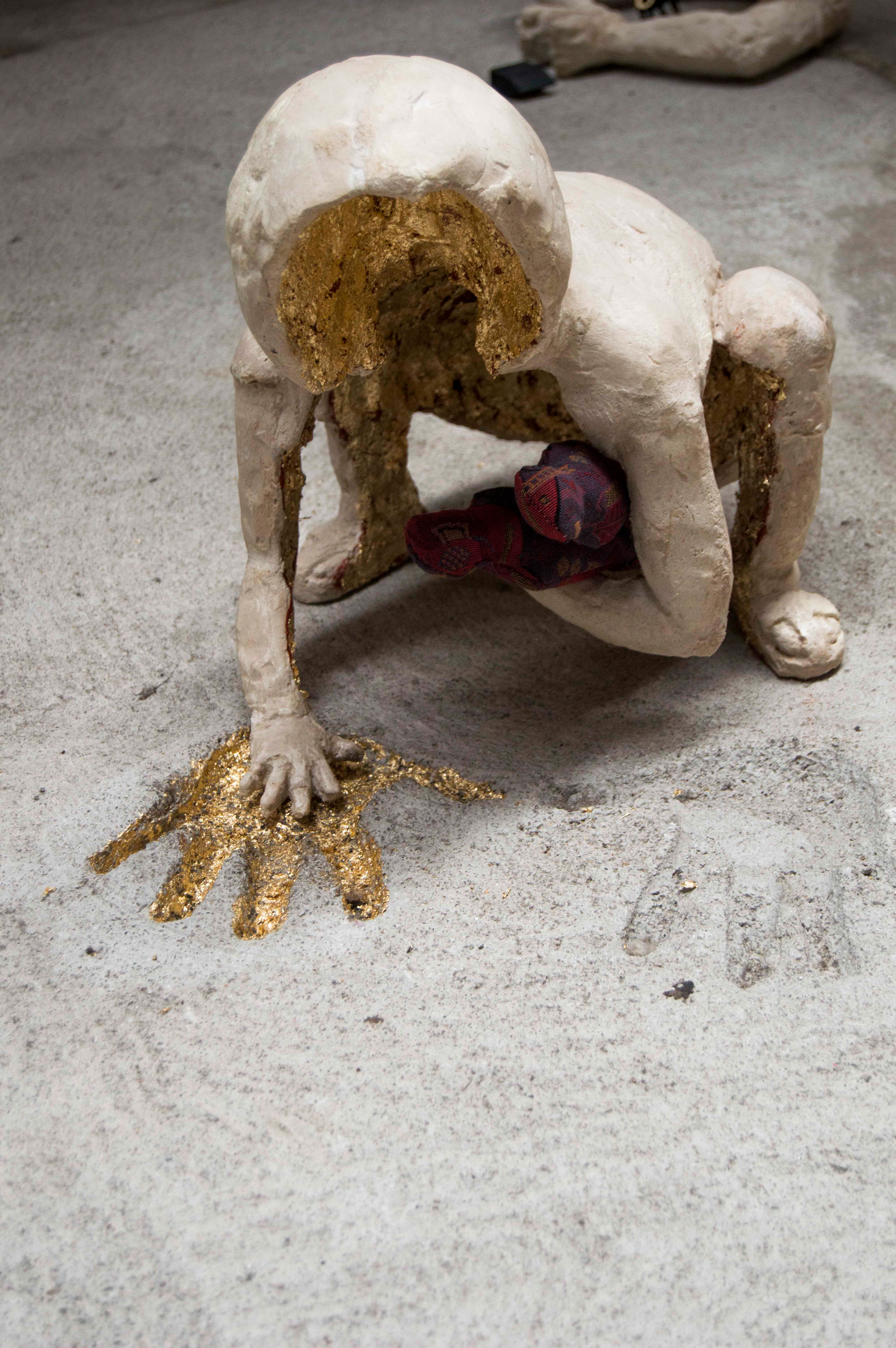
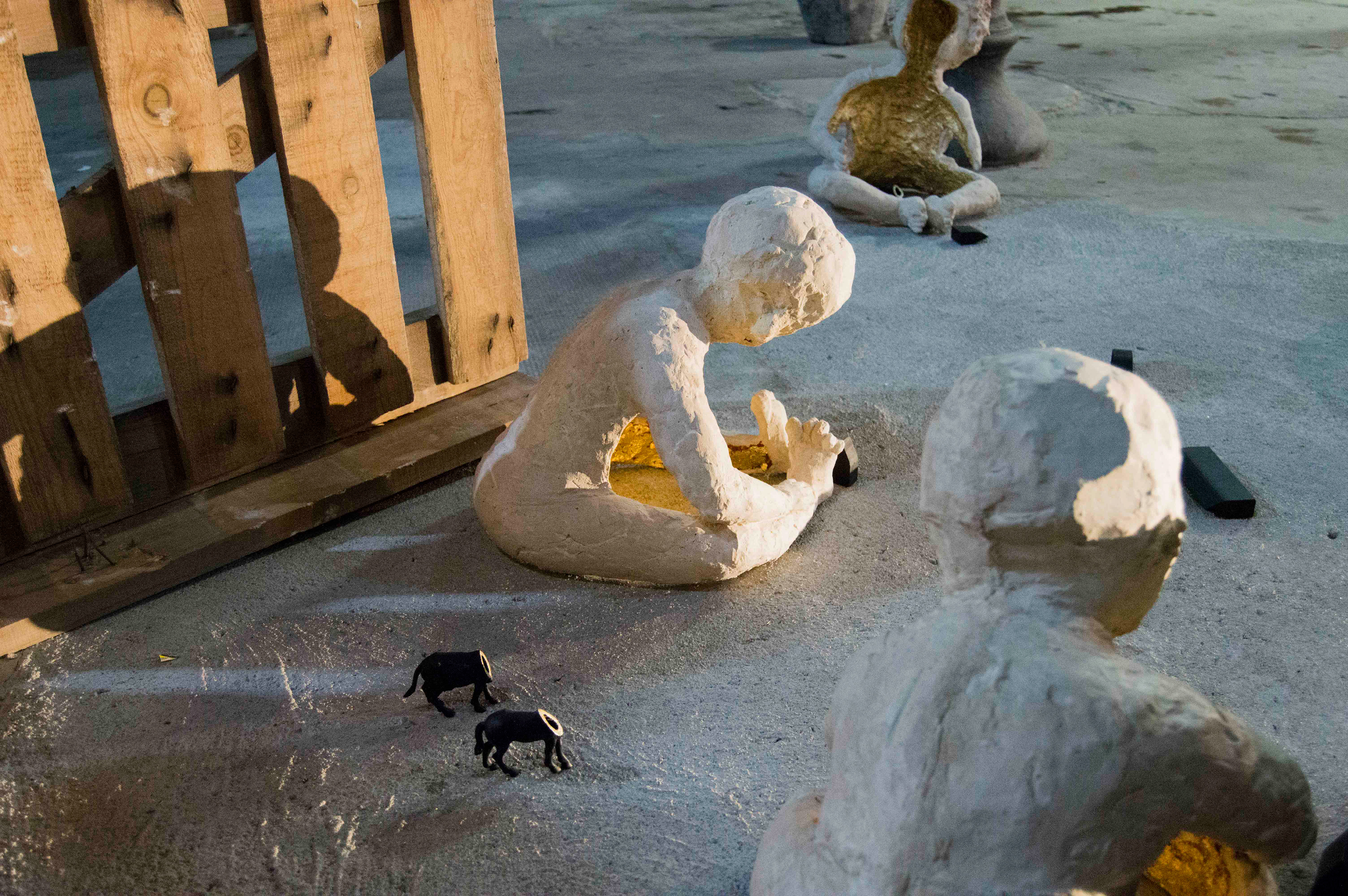
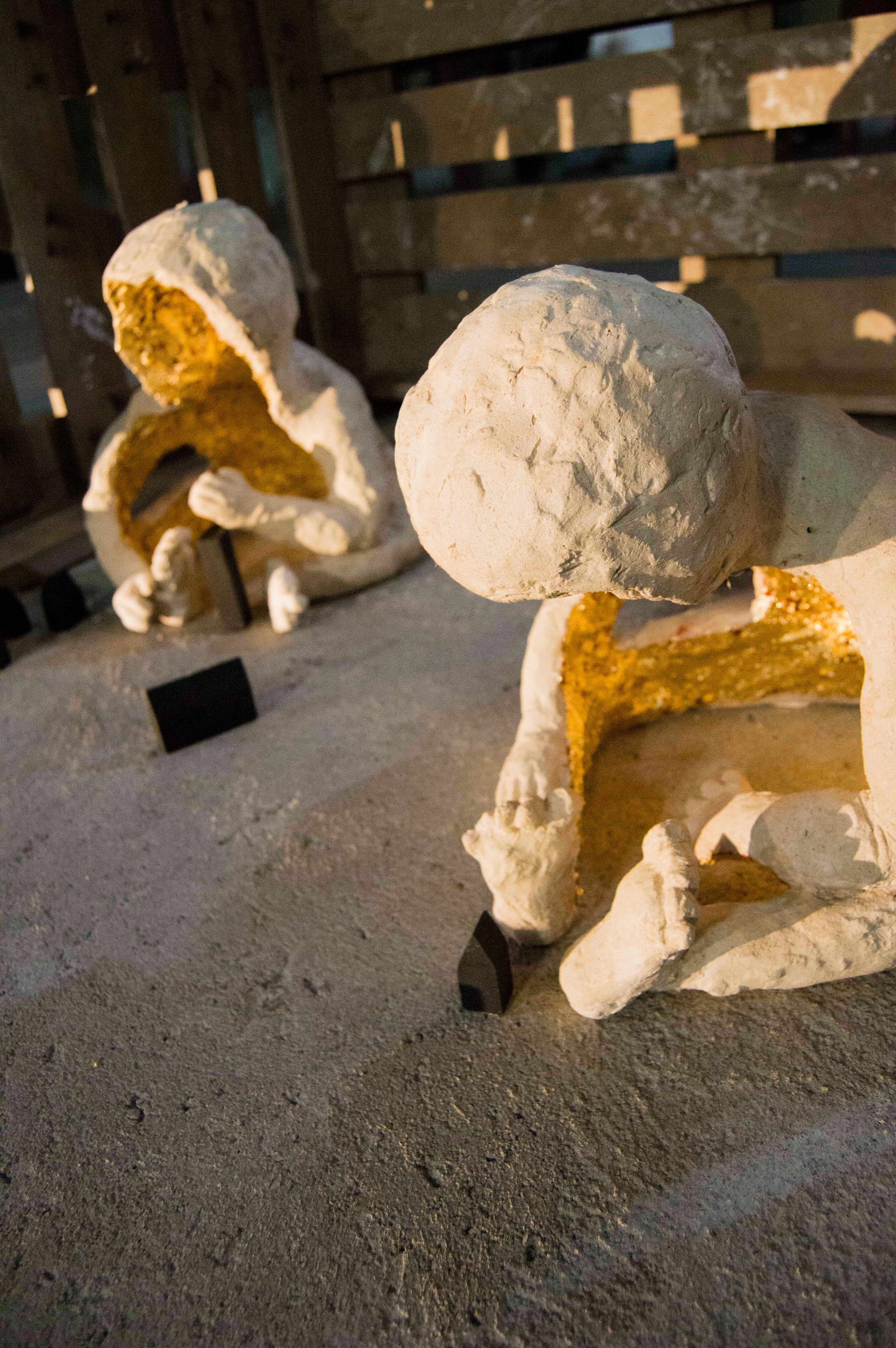
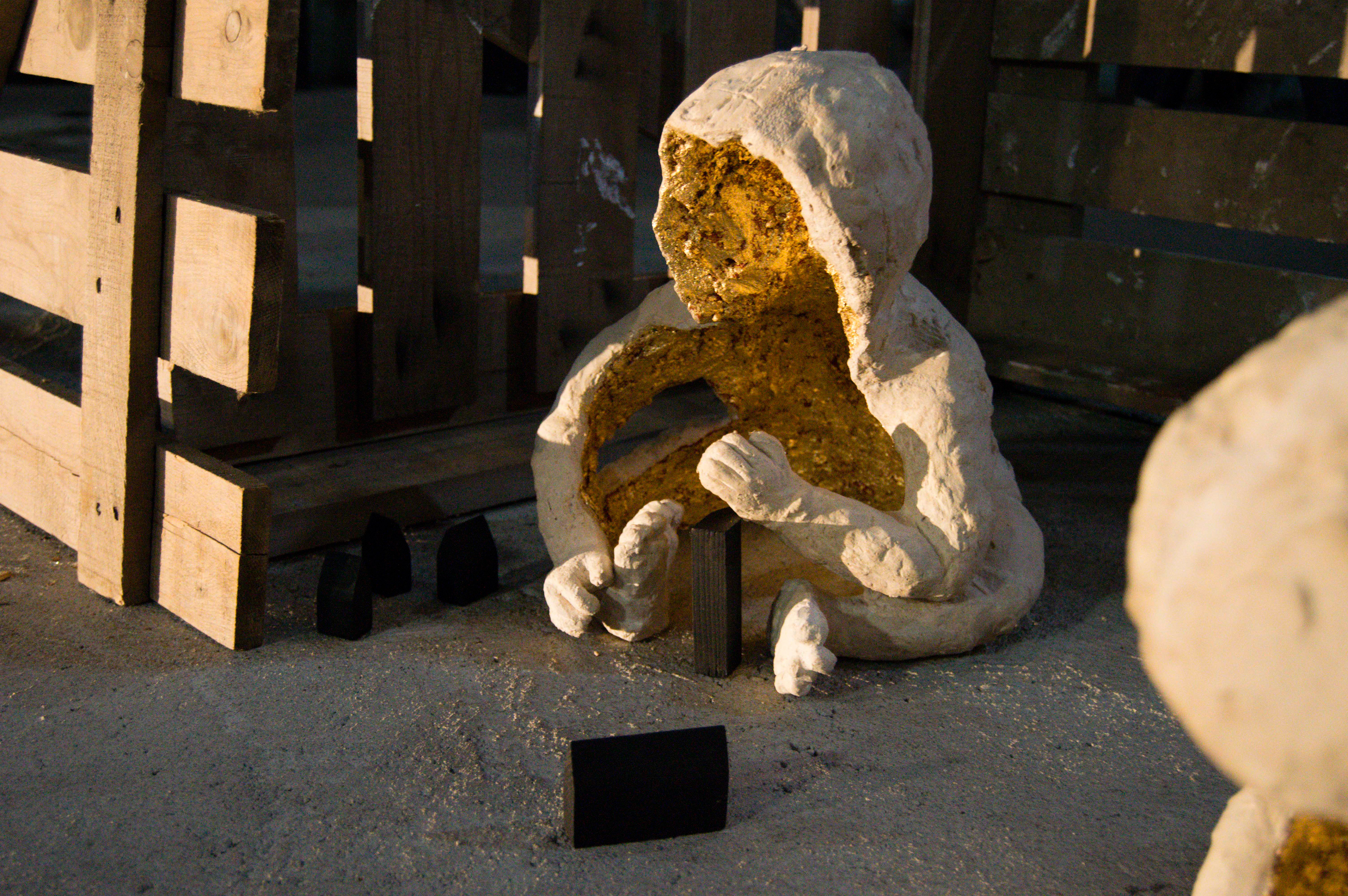
“Bastián” - La Historia Interminable, Michael Ende: refiere a la memoria -por cada deseo un recuerdo menos- La percepción del individuo, se basa en la unión de las imágenes sucesivas e imágenes de representación cuya permanencia se prolonga voluntariamente en el tiempo.
“Gregor Samsa”. Metamorphosis, Franz Kafka. Negación, duelo y aceptación. Su característica forma de afrontar y ser testigo del abandono progresivo de su familia, su incapacidad de expresar lo que siente y lo que piensa.
“Clarice M. Starling” El silencio de los corderos, Thomas Harris. El personaje de ficción resuelve un ejercicio de identidad durante el desarrollo de la película, un silencio a gritos.
“Olivia Twenty Dahl” Así se llamaba la hija de Roald Dhal, escritor de muchas historias para niños: “Así que la joven mente de Matilda siguió creciendo, alimentada por las voces de todos aquellos autores que habían lanzado sus libros al mundo como barcos a la mar. Esos libros dieron a Matilda un mensaje de esperanza: No estás sola.”
-Bastián- The Neverending Story, Michael Ende: refers to memory -for each desire one less memory- The perception of the individual is based on the union of successive images and images of representation whose permanence is voluntarily prolonged in time.
-Gregor Samsa-. Metamorphoses, Franz Kafka. Denial, mourning and acceptance. His characteristic way of facing and witnessing the progressive abandonment of his family is his inability to express what he feels and what he thinks.
-Clarice M. Starling- The silence of the lambs, Thomas Harris. The fictional character resolves an identity exercise during the development of the film, a shouting silence.
-Olivia Twenty Dahll- This was the name of the daughter of Roald Dhal, writer of many children's stories: “So Matilda's young mind continued to grow, fed by the voices of all those authors who had launched their books into the world like ships at sea. the sea. Those books gave Matilda a message of hope: You are not alone.